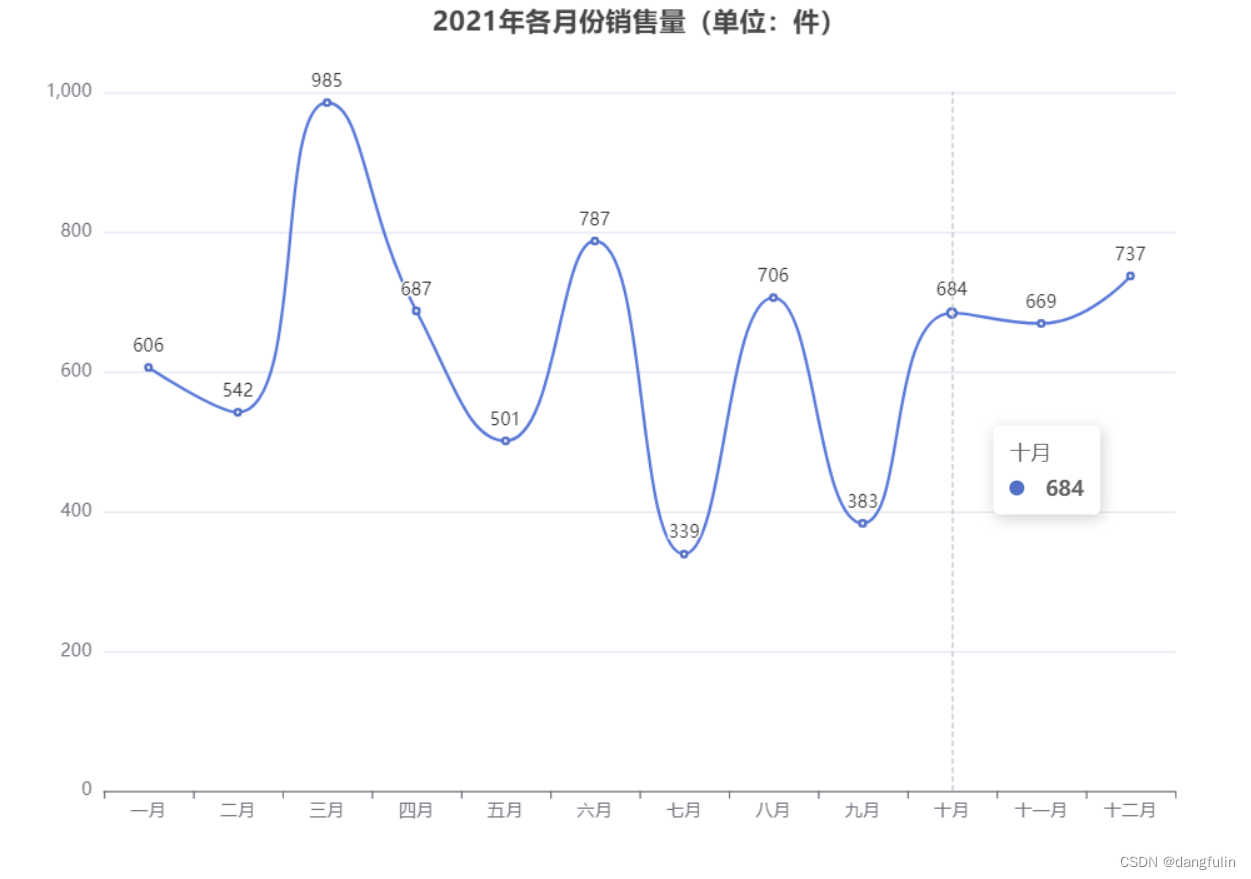前言
在大屏可视化项目中,我们常常需要用到很多的图表组件,通常你会编写很多的option对图表进行渲染,以及引入它们所需的一些组件并使用echart.use。
在Vue2中我们常常把可复用的组件单独抽离出来,再通过props、emit等方法向复用组件中传入组件所需数据,而在Vue3中我们可以将一些逻辑功能写成hook进行抽离和复用再传入到视图中,这会不仅让你的组件中的代码更加优雅而且阅读性更强。
封装思路
引入模块
我们先创建lib.ts文件,用于将echart图表中所需要用到组件全部引入进来并导出。
由于引入的模块过多,所以我们把它引入的模块的代码抽离出来,增加代码的可阅读性
// lib.ts
import * as echarts from 'echarts/core';
import {
BarChart,
LineChart,
PieChart,
MapChart,
PictorialBarChart,
RadarChart,
ScatterChart
} from 'echarts/charts';
import {
TitleComponent,
TooltipComponent,
GridComponent,
PolarComponent,
AriaComponent,
ParallelComponent,
LegendComponent,
RadarComponent,
ToolboxComponent,
DataZoomComponent,
VisualMapComponent,
TimelineComponent,
CalendarComponent,
GraphicComponent
} from 'echarts/components';
echarts.use([
LegendComponent,
TitleComponent,
TooltipComponent,
GridComponent,
PolarComponent,
AriaComponent,
ParallelComponent,
BarChart,
LineChart,
PieChart,
MapChart,
RadarChart,
PictorialBarChart,
RadarComponent,
ToolboxComponent,
DataZoomComponent,
VisualMapComponent,
TimelineComponent,
CalendarComponent,
GraphicComponent,
ScatterChart
]);
export default echarts;封装功能
在同级目录下创建一个useChart.ts文件,这是我们复用echart图表hook文件。
封装功能如下:
- 监听图表元素变化及视图,自动重新渲染图表适应高度
- 可传入主题、渲染模式(SVG、Canvas)
- loading效果
import { nextTick, onMounted, onUnmounted, Ref, unref } from "vue";
import type { EChartsOption } from 'echarts';
import echarts from "./lib";
import { SVGRenderer, CanvasRenderer } from "echarts/renderers";
import { RenderType, ThemeType } from "./types";
export default function useChart(elRef: Ref<HTMLDivElement>, autoChartSize = false, animation: boolean = false, render: RenderType = RenderType.SVGRenderer, theme: ThemeType = ThemeType.Default) {
// 渲染模式
echarts.use(render === RenderType.SVGRenderer ? SVGRenderer : CanvasRenderer)
// echart实例
let chartInstance: echarts.ECharts | null = null;
// 初始化echart
const initCharts = () => {
const el = unref(elRef)
if (!el || !unref(el)) {
return
}
chartInstance = echarts.init(el, theme);
}
// 更新/设置配置
const setOption = (option: EChartsOption) => {
nextTick(() => {
if (!chartInstance) {
initCharts();
if (!chartInstance) return;
}
chartInstance.setOption(option)
hideLoading()
})
}
// 获取echart实例
function getInstance(): echarts.ECharts | null {
if (!chartInstance) {
initCharts();
}
return chartInstance;
}
// 更新大小
function resize() {
chartInstance?.resize();
}
// 监听元素大小
function watchEl() {
// 给元素添加过渡
if (animation) { elRef.value.style.transition = 'width 1s, height 1s' }
const resizeObserver = new ResizeObserver((entries => resize()))
resizeObserver.observe(elRef.value);
}
// 显示加载状
function showLoading() {
if (!chartInstance) {
initCharts();
}
chartInstance?.showLoading()
}
// 显示加载状
function hideLoading() {
if (!chartInstance) {
initCharts();
}
chartInstance?.hideLoading()
}
onMounted(() => {
window.addEventListener('resize', resize)
if (autoChartSize) watchEl();
})
onUnmounted(() => {
window.removeEventListener('resize', resize)
})
return {
setOption,
getInstance,
showLoading,
hideLoading
}
}// types.ts
export enum RenderType {
SVGRenderer = 'SVGRenderer',
CanvasRenderer = 'SVGRenderer'
}
export enum ThemeType {
Light = 'light',
Dark = 'dark',
Default = 'default'
}有了以上封装好之后的代码,我们在组件中使用echart图表库时将会更加简单而高效。
使用例子
// index.vue
<template>
<div ref="chartEl" :style="{ width: `300px`, height: `300px` }"></div>
</template>
<script setup lang="ts">
import { onMounted, Ref, ref, computed, nextTick } from "vue";
import type { EChartsOption } from 'echarts'
import useChart, { RenderType, ThemeType } from '../../useChart'
import axios from 'axios'
const option = computed<EChartsOption>(() => ({
// ...chart option
}))
const chartEl = ref<HTMLDivElement | null>(null)
const {
setOption,
showLoading
} = useChart(chartEl as Ref<HTMLDivElement>, true, true, RenderType.SVGRenderer, ThemeType.Dark)
onMounted(() => {
nextTick(() => {
// 显示loading
showLoading()
// 假装有网络请求 ...
// 渲染图表
setOption(option.value);
})
})
</script>Github仓库地址(含例子):github.com/QC2168/useC…
总结
到此这篇关于在Vue3中如何更优雅的使用echart图表的文章就介绍到这了,更多相关Vue3使用echart图表内容请搜索阿兔在线工具以前的文章或继续浏览下面的相关文章希望大家以后多多支持阿兔在线工具!



